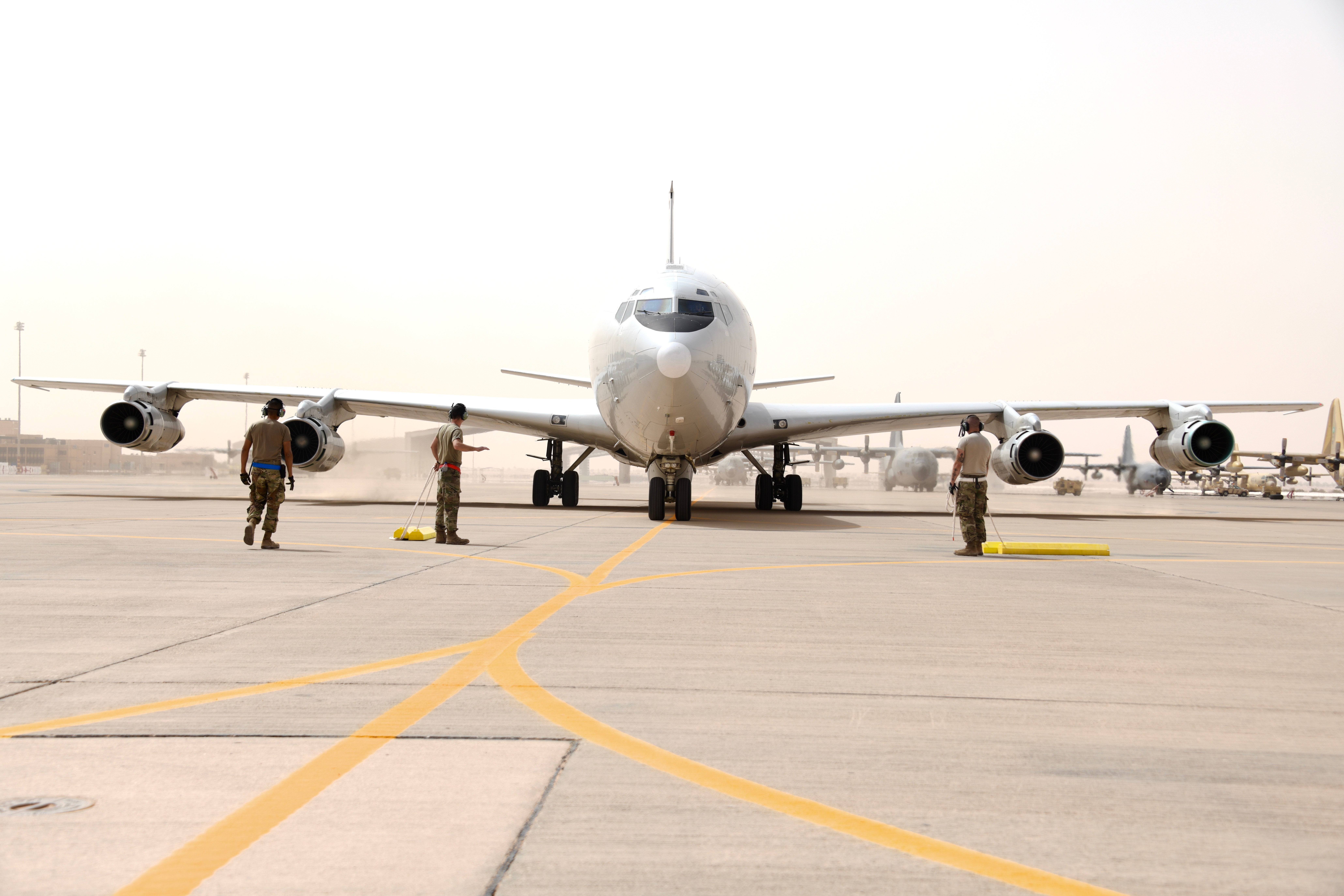Since its revitalization as a host for U.S. forces in 2019, Prince Sultan Air Base has evolved to provide needed operational depth in the Middle East. Led by the 378th Air Expeditionary Wing, Prince Sultan AB has transformed into a major hub of support for U.S. Central Command’s projection of decisive airpower and deterrence throughout the region. In doing so, PSAB has supported a variety of combat aircraft including the F-15E Strike Eagle, F-16 Fighting Falcon, F-22 Raptor, and the F-35A Lightning II. Now, with its recent support of the E-3 Airborne Warning and Control System (Sentry), the installation is not only a staging point for smaller aircraft but it is also helping modernize the tactics and employment of the Air Force’s intelligence, surveillance and reconnaissance aircraft.

This past week, members of the E-8C Joint Surveillance Target Attack Radar System (JSTARS) assigned to the 7th Expeditionary Airborne Command and Control Squadron at Al Udeid AB, Qatar, forward deployed to Prince Sultan AB to improve its employment capability in the region. The rapid deployment and agile combat employment exercise, which ran from March 8-10 provided the aircrew and its maintainers a unique operating wrinkle to an aircraft which has primarily operated from a more established for the previous 18 years. This exercise affords his aircrews the opportunity to train in conducting a rapid deployment to an austere environment.

The JSTARS is a joint U.S. Air Force and U.S. Army program that detects, tracks and classifies vehicles in all conditions deep behind enemy lines by using a multi-mode side looking radar. The system evolved from Army and Air Force programs to develop, detect, locate and attack enemy armor at ranges beyond the forward area of troops. During their exercise, members of the JSTARS team were able to work with their Royal Saudi air force coalition partners and members of the 378th AEW to project capability from Prince Sultan AB. The JSTARS exercise at Prince Sultan AB shows CENTCOM’s adjustments to increase survivability and deterrence capabilities in the region.

The Northrop Grumman E-8 Joint Surveillance Target Attack Radar System (JSTARS) is a United States Air Force airborne ground surveillance, battle management and command and control aircraft. It tracks ground vehicles and some aircraft, collects imagery, and relays tactical pictures to ground and air theater commanders. The aircraft is operated by both active duty Air Force and Air National Guard units and also carries specially trained U.S. Army personnel as additional flight crew. The E-8C is an aircraft modified from the Boeing 707-300 series commercial airliner. The E-8 carries specialized radar, communications, operations and control subsystems. The most prominent external feature is the 40 ft (12 m) canoe-shaped radome under the forward fuselage that houses the 24 ft (7.3 m) APY-7 passive electronically scanned array Side looking airborne radar antenna.[1]